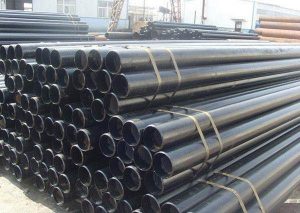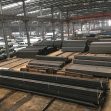The demand for steel was slowly repaired
Over the past year, the global steel industry has faced numerous challenges and disruptions due to the impact of the COVID-19 pandemic. Lockdown measures, supply chain disruptions, and a decline in construction activities led to a significant decrease in the demand for hot rolled steel pipe. However, as the world slowly recovers from the effects of the pandemic, there are signs of the demand for steel being repaired.
During the height of the pandemic, many construction projects were put on hold, affecting the demand for steel. Shutdowns and restrictions resulted in delays and cancellations of infrastructure projects, commercial buildings, and residential developments. This sudden halt in construction activities had a direct impact on the demand for steel, as it is a vital material in the construction industry.
However, as vaccination efforts increase and economies begin to reopen, the demand for steel is gradually picking up. Governments around the world are implementing stimulus packages and infrastructure investment plans to revive their economies. These initiatives include significant investments in construction projects, such as roads, bridges, railways, and public buildings. As a result, the demand for structural steel pipe is expected to rebound.

The automotive industry, another major consumer of steel, is also showing signs of recovery. With people resuming their travel and transportation needs, the demand for automobiles is increasing. This, in turn, drives the demand for steel used in manufacturing vehicles. As automobile production ramps up, China steel tube manufacturers are experiencing an uptick in orders for automotive-grade steel.
Furthermore, the renewable energy sector is playing a significant role in repairing the demand for steel. As countries strive to meet their climate change commitments, there is a growing focus on renewable energy sources such as wind and solar power. These renewable energy projects require substantial amounts of steel for the construction of wind turbines, solar panels, and supporting infrastructure. As investment in renewable energy projects accelerates, the demand for steel is expected to rise accordingly.
However, it is worth noting that the repair of the demand for steel is a gradual process. The steel industry is still facing challenges such as supply chain disruptions, rising raw material costs, and lingering uncertainties caused by the pandemic. Additionally, geopolitical factors and trade tensions between countries can also impact the steel market.
In conclusion, while the global steel industry experienced a decline in demand during the pandemic, there are positive signs of repair. Stimulus packages, infrastructure investments, automotive production, and the renewable energy sector are contributing to the gradual recovery of the demand for metal pipe. As economies continue to reopen and construction activities resume, the steel industry is poised for a gradual rebound, albeit with challenges that need to be navigated.
Tel: +86 18202256900 Email: steel@tjdpbd.com










